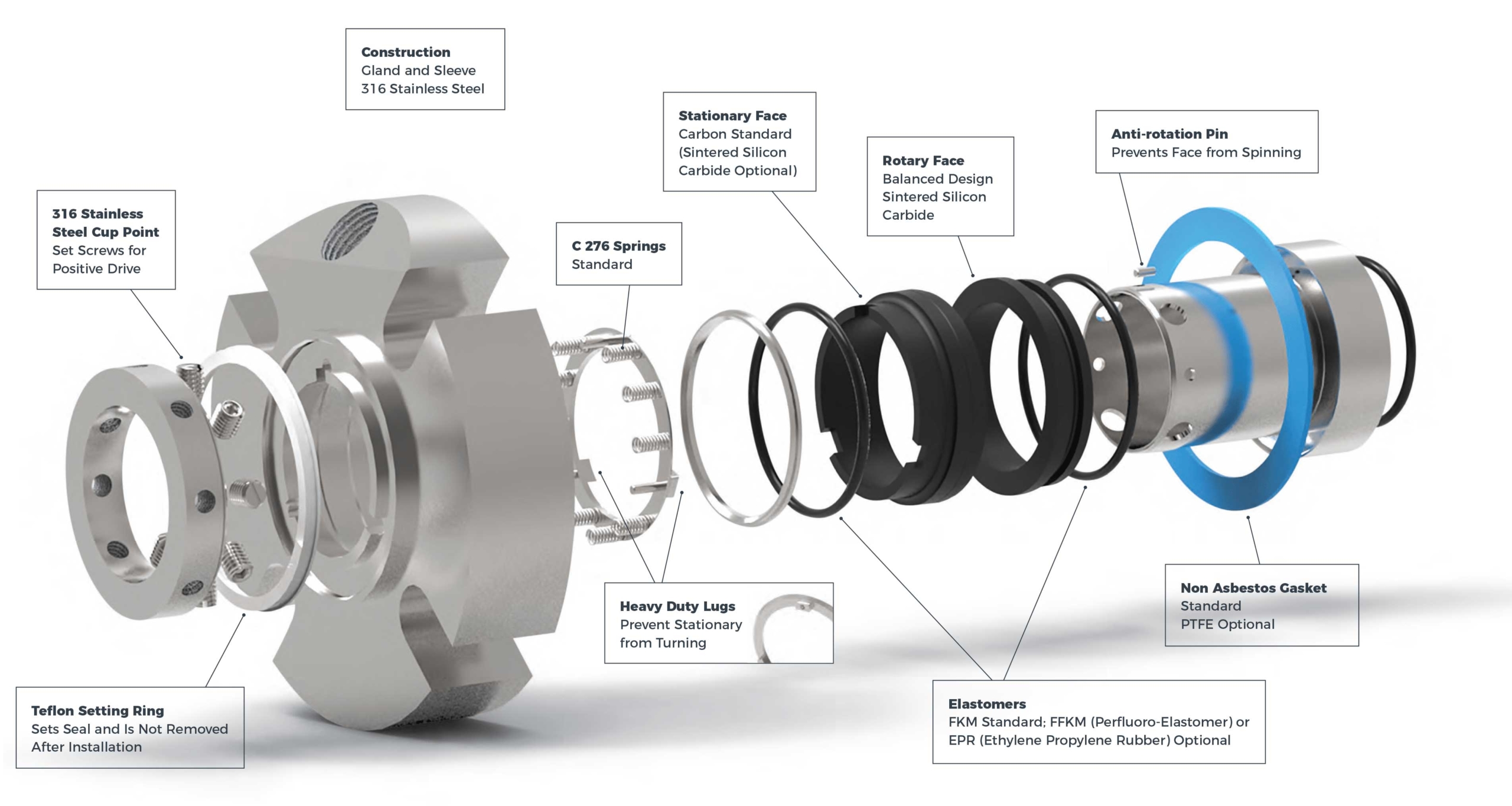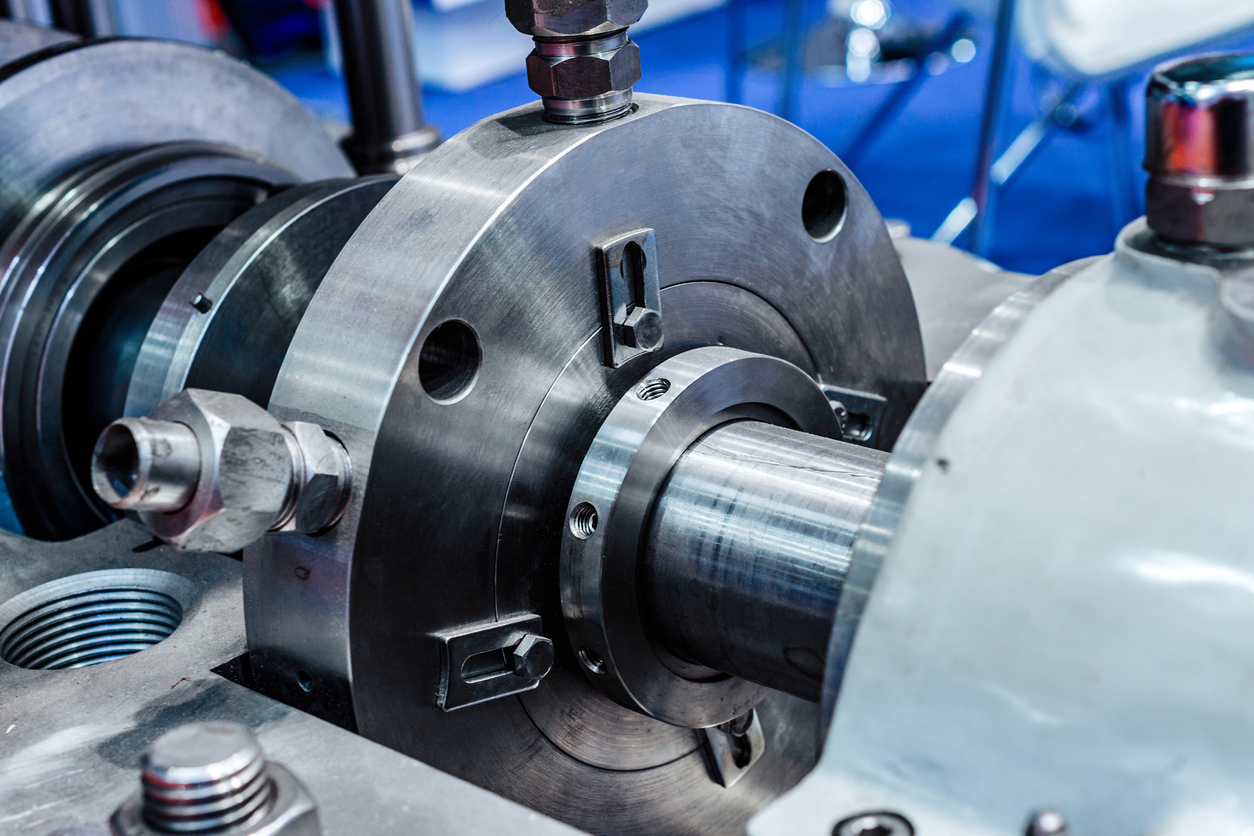Unveiling the Intricacies: Designing Mechanical Seals for Optimal Performance
Unveiling the Intricacies: Designing Mechanical Seals for Optimal Performance
A typical mechanical seal comprises several key components, each playing a pivotal role including proper installation and maintenance for longevity and Optimal Performance
Mechanical seals play a crucial role in various industries, ensuring the containment of fluids within machinery while preventing leakage. From pumps to compressors, these seals are vital components that demand meticulous design and engineering. In this blog, we'll delve into the fascinating world of mechanical seal design, exploring the intricate process that goes into creating these essential components.

Understanding the Purpose
Before delving into the design process, it's important to grasp the fundamental purpose of a mechanical seal. These seals are used to prevent fluid leakage between two rotating or stationary components in machinery. They maintain a barrier between the fluid being pumped and the external environment, ensuring efficiency, safety, and environmental compliance.
Core Components
A typical mechanical seal comprises several key components, each playing a vital role in its functionality:
- Primary Sealing Surface: This is the area where the seal faces come into contact to prevent fluid leakage. The primary sealing surface must be precisely engineered to ensure a tight seal without excessive friction, which could lead to wear and inefficiency.
- Secondary Sealing Elements: These components provide additional sealing and stability to the primary sealing surface. They may include O-rings, elastomers, or secondary seals that complement the main sealing mechanism.
- Metallic Components: Mechanical seals often incorporate metallic parts such as springs, retainers, and housings to provide structural support and maintain the integrity of the seal under various operating conditions.
- Flush Plans (Optional): In some applications, particularly those involving abrasive or corrosive fluids, flush plans may be incorporated to provide additional cooling, lubrication, or cleaning to the seal faces, extending their lifespan.
The Design Process
Designing a mechanical seal is a multi-faceted process that requires careful consideration of various factors, including operating conditions, fluid properties, equipment specifications, and industry standards. Here's an overview of the typical steps involved:
- Requirements Analysis: The design process begins with a thorough analysis of the application requirements, including operating temperature, pressure, fluid type, speed, and environmental considerations. Understanding these factors is crucial for selecting the appropriate materials and configurations for the seal.
- Material Selection: Choosing the right materials is critical for ensuring compatibility with the fluid being sealed, as well as resistance to wear, corrosion, and temperature extremes. Common materials include carbon, ceramic, tungsten carbide, stainless steel, and various elastomers.
- Seal Configuration: Based on the application requirements, engineers select the most suitable seal configuration, which may include single or multiple sealing surfaces, balanced or unbalanced designs, and various sealing arrangements such as cartridge seals, component seals, or split seals.
- Finite Element Analysis (FEA): Computer-aided design (CAD) software and finite element analysis (FEA) tools are used to simulate the performance of the seal under different operating conditions. This allows engineers to optimize the design for factors such as stress distribution, thermal effects, and fluid dynamics.
- Prototyping and Testing: Once the initial design is complete, prototypes are manufactured and subjected to rigorous testing in laboratory or field conditions. Testing may include performance evaluations, leak testing, endurance testing, and validation against industry standards.
- Iterative Refinement: Based on the test results, the design may undergo iterative refinement to address any performance issues or optimization opportunities. This iterative process continues until the seal meets all performance requirements and achieves the desired level of reliability and efficiency.
Conclusion
Designing a mechanical seal is a complex and iterative process that demands a deep understanding of fluid dynamics, materials science, mechanical engineering, and manufacturing techniques. By carefully considering the application requirements and leveraging advanced design and simulation tools, engineers can create seals that deliver optimal performance, reliability, and longevity in a wide range of industrial applications. From enhancing equipment efficiency to ensuring operational safety and environmental compliance, well-designed mechanical seals play a crucial role in the smooth functioning of machinery across various industries.

